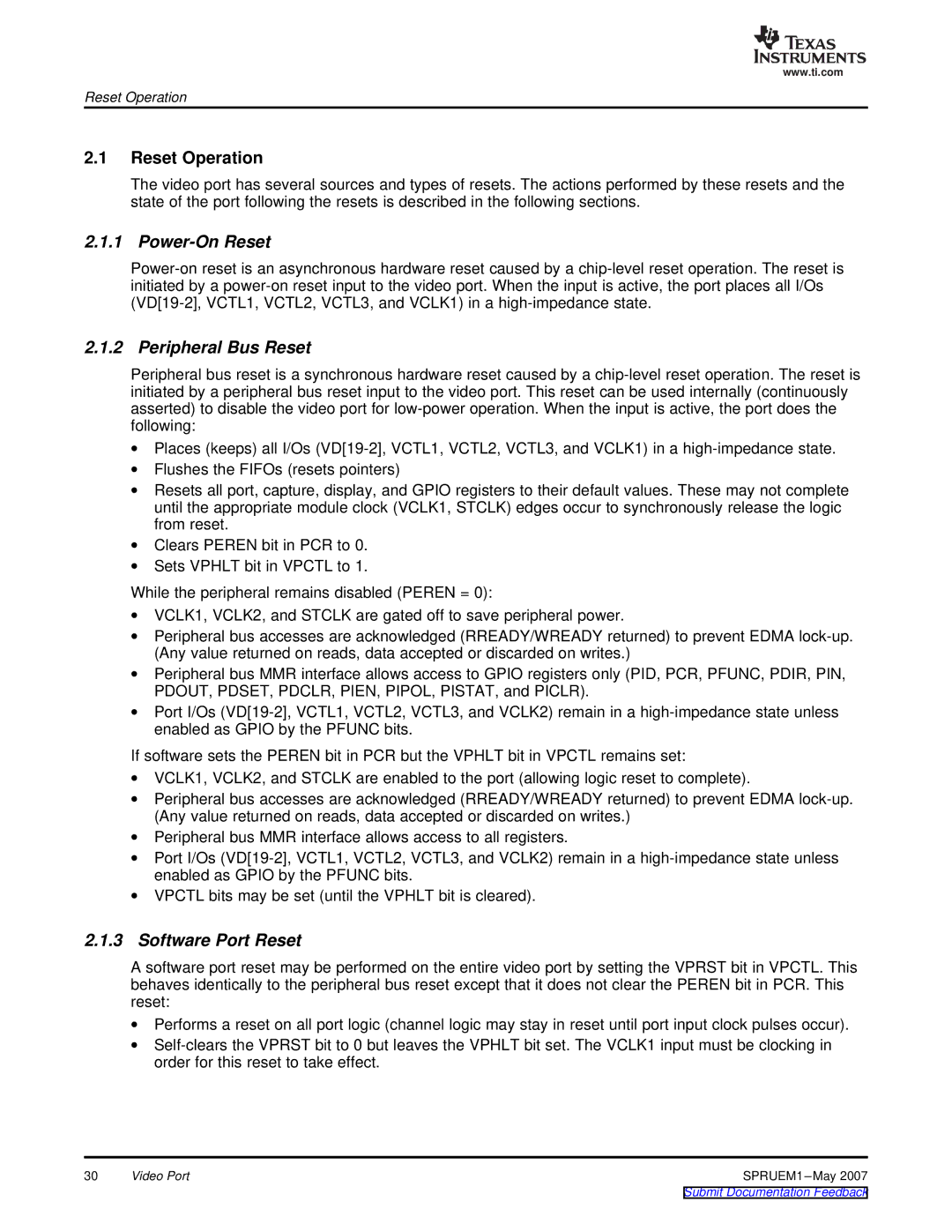
www.ti.com
Reset Operation
2.1Reset Operation
The video port has several sources and types of resets. The actions performed by these resets and the state of the port following the resets is described in the following sections.
2.1.1 Power-On Reset
2.1.2 Peripheral Bus Reset
Peripheral bus reset is a synchronous hardware reset caused by a
∙Places (keeps) all I/Os
∙Flushes the FIFOs (resets pointers)
∙Resets all port, capture, display, and GPIO registers to their default values. These may not complete until the appropriate module clock (VCLK1, STCLK) edges occur to synchronously release the logic from reset.
∙Clears PEREN bit in PCR to 0.
∙Sets VPHLT bit in VPCTL to 1.
While the peripheral remains disabled (PEREN = 0):
∙VCLK1, VCLK2, and STCLK are gated off to save peripheral power.
∙Peripheral bus accesses are acknowledged (RREADY/WREADY returned) to prevent EDMA
∙Peripheral bus MMR interface allows access to GPIO registers only (PID, PCR, PFUNC, PDIR, PIN, PDOUT, PDSET, PDCLR, PIEN, PIPOL, PISTAT, and PICLR).
∙Port I/Os
If software sets the PEREN bit in PCR but the VPHLT bit in VPCTL remains set:
∙VCLK1, VCLK2, and STCLK are enabled to the port (allowing logic reset to complete).
∙Peripheral bus accesses are acknowledged (RREADY/WREADY returned) to prevent EDMA
∙Peripheral bus MMR interface allows access to all registers.
∙Port I/Os
∙VPCTL bits may be set (until the VPHLT bit is cleared).
2.1.3Software Port Reset
A software port reset may be performed on the entire video port by setting the VPRST bit in VPCTL. This behaves identically to the peripheral bus reset except that it does not clear the PEREN bit in PCR. This reset:
∙Performs a reset on all port logic (channel logic may stay in reset until port input clock pulses occur).
∙
30 | Video Port | SPRUEM1 |
